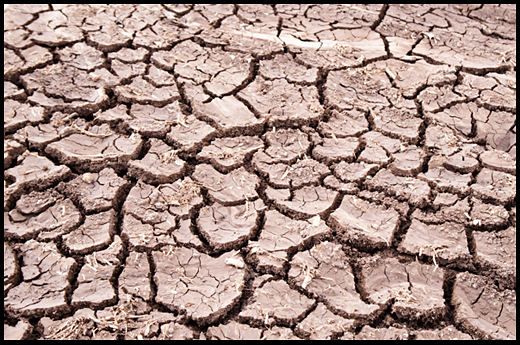
by guest blogger Wendy Gordon, pioneer in the green consumer movement
Scorching temperatures and persistent drought have devastated farms across the United States, sending corn and soybean prices soaring as fields dry out and crops wither. While this meant a summer of bumper fruit crops (higher temps hastened the ripening and boosted the natural sugar levels of many fruits), we don’t live on peaches.
We live on corn, and as a consequence, our food budgets are extremely vulnerable to weather-driven crashes in the corn market. Not only do we eat massive amounts of corn and corn products, but we make our livestock eat it, too. So along with grain prices, meat, dairy, and even farmed seafood prices (yes, even our fish eat corn) could hit the roof this year.
Now seems like a good time to ask whether being so dependent on those golden kernels makes any sense…but I digress.
Let’s talk about how you can tailor your diet to these new drought conditions. Here are six simple steps that can pay off big for your health and for our planet while taking it easy on your wallet.
1. Vary your proteins
The water footprint of beef is two and a half times that of pork, and almost four times that of chicken. Shifting your diet away from water- and energy-intensive proteins (beef) to the more-efficient sources (chicken, fish, grains, legumes, nuts) could reduce pressure on the Earth’s land and water resources.
Fish is also a smart, lean protein choice. Unfortunately, seafood can often be contaminated with high levels of mercury and PCBs, or come from populations that are being overfished. It’s best to eat a variety of fish, favoring those that are wild, lower on the food chain, and sustainably harvested. And remember, meat-free protein is still protein, so try to fill your carts with alternative protein sources like cottage cheese, pumpkin seeds, eggs, edamame, beans, oatmeal, quinoa, and lentils.
2. When you do eat beef, eat grass fed
For those worried about how expensive grass-fed beef is compared to corn-fed meat, buy grass-fed ground beef, which is much cheaper. And it’s worth it. Beef from cattle fed on grass—a diet for which their pH-neutral gut is better suited—is lower both in overall fat and saturated fat. It also provides more healthy omega-3 fatty acids and up to four times more vitamin E than meat from corn-fed cattle.
For health (and taste) purposes, grass-fed is a clear winner, and for water conservation purposes, grazing is also preferable to industrial production systems. A stretch of pure prairie will absorb five to seven inches of rain an hour, meaning that 12 feet of rain in a 24-hour stretch yields no runoff. Normal absorption on corn and soybean land ranges from 0.5 inch to 1.5 inches an hour, meaning that comparable rainfall yields catastrophic floods. Such differences in water resiliency could avert disaster in times of too much rain, as well as too little.
3. Mind your portion sizes
Trimming down how much meat you eat is also a good idea. The U.S. Department of Agriculture (USDA) recommends a serving size of 2.5 ounces of meat a day, which is about the size of a deck of cards. That’s a good deal smaller than a quarter-pounder (4 ounces), which is still less than the 5.4 ounces of meat usually found on dinner plates across the country.
4. Be smart about your pantry
Cutting back on heavily processed and packaged foods (prepared meals, snack bars, chips, and such) will help you keep your food budget under control as the drought drives up prices for corn- and soy-based processed foods. Plus, these foods often are higher in salt and sugar, so reducing your intake is good for your body and your wallet.
Instead, keep your pantry well stocked with beans, whole grains (quinoa, farro, wild rice), nuts, and seeds. In the fridge, have Greek yogurt (higher in protein than regular yogurt and easier to digest than milk), eggs, cottage cheese, and lots of fruits and vegetables on standby as snacks.
5. Dine in
With a well-stocked pantry and a fridge filled with healthy whole foods, cooking from scratch is the most affordable, resource-conscious way to eat well. (Let’s face it, takeout is expensive.) Recipes abound for quick and easy home-cooked meals.
6. Minimize waste
The USDA estimates that Americans waste 30 percent of all edible food produced, bought, and sold in this country. The consequences of this wastefulness are staggering: 25 percent of all freshwater and 4 percent of all oil consumed in this country are used to produce food that is never eaten.
Reduce waste and save money by planning meals better, using leftovers creatively (packing them into reusable containers for the next day’s lunch) and making (or ordering) just enough to satisfy your appetite will have you wasting less food, less resources, and less money.
It will take some getting used to, but from farm to table, we can make a few small adjustments in order to thrive in this more heat-stressed and drought-prone world.
 Wendy Gordon is a leader in the green-consumer movement. She founded Mothers & Others for a Livable Planet and Green Guide, a resource for the eco-conscious consumer. She is now a consulting editor for the Natural Resource Defense Council and OnEarth, its online magazine.
Wendy Gordon is a leader in the green-consumer movement. She founded Mothers & Others for a Livable Planet and Green Guide, a resource for the eco-conscious consumer. She is now a consulting editor for the Natural Resource Defense Council and OnEarth, its online magazine.




These are all really good suggestions! I would add one more to help minimize the damage of future droughts: Support organic farmers. They don’t use the heavy herbicides and pesticides which kill the living organisms and worms in the soil which in turn help compost the leftover corn stalks, bean roots…. and which consequently become the farm fields that hold on to their moisture longer than conventionally farmed non-organic fields.
The problem with a country relying on monocropping is that whenever something happens to said crop, it really affects the status quo. We have biblical examples of this problem, we have the great potato famine as another example but STILL we persist with narrowing down our food sources to maximise profit. The true winners out of this drought will be producers who grow sustainably and who grass feed their animals. Perhaps it isn’t such a bad thing that we are not able to source G.M. crops and food stuff? Maybe if our organic farmers and our smaller producers are the only choice they will be able to expand their interests and others will follow suit? Out of the ashes rises the phoenix! 🙂